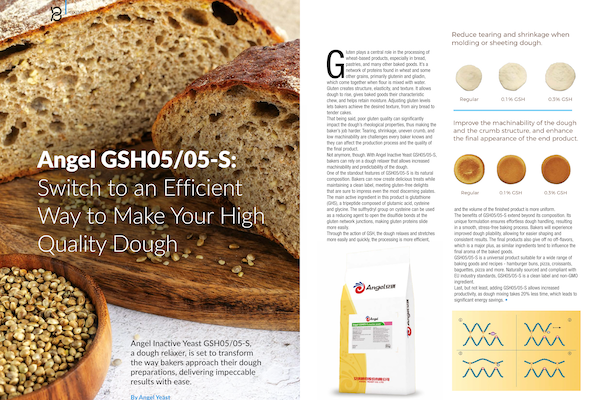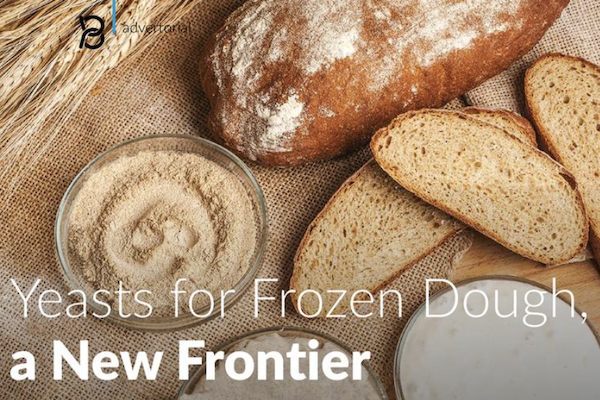-
Home > News & Events > Blog > Yeast & Baking
1. Types of Yeast
Yeast on the market is a kind of safe and healthy fluffy biological products that can be classified as follow:
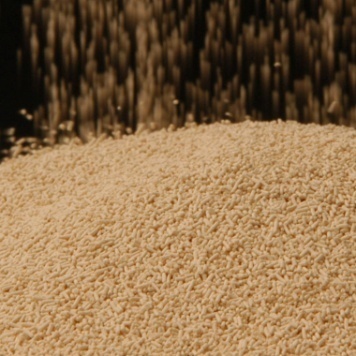
a. According to the "sugar tolerance ", it can be divided into:
High-sugar Yeast (for pasta formula in which the sugar accounts for over 7% of flour weight)
Low-sugar Yeast (for pasta formula in which the sugar accounts for over 7% of flour weight);
b. According to the "moisture content in yeast", it can be divided into:
Instant Dry Yeast (moisture content of about 5%)
Semi-dry Yeast (moisture content of about 20%)
Fresh Yeast (moisture content of about 70%)
Cream yeast (moisture content over 90%)
1). Instant Dry Yeast
Packaging and shelf life: generally with vacuum packaging or nitrogen filling packaging to keep yeast activity, it can be stored at room temperature. It is packed into 5 g -125 g for household use, 500 g for commercial use and 5 - 10 kg for industrial use. Its shelf life is up to 2 years, and it can still be used by slightly increasing the dosage when it expires the best-by date.
After opening the packaging, please use as soon as possible. Please expel the air from the package, seal and keep it at cool and dry place.
It is common yeast with stable quality. It is easy to use: it can be added directly into the flour, no need for water activation.
Dosage: the recommended dosage for bread is 1% of flour weight, and that for pasta like steamed bun is 0.2% - 0.3% of flour weight.
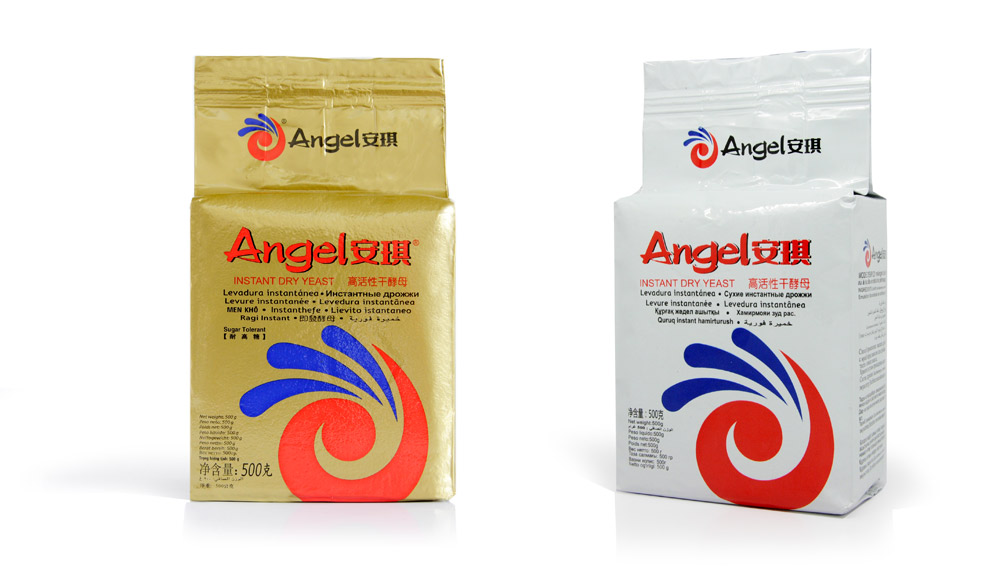
2). Semi-dry Yeast
It is small particle yeast that needs cryopreservation. It has high activity and good flavor and is suitable for frozen dough, and it also has good fluidity, long shelf life and is convenient to use.
It is packed with non-vacuum PV bag and has the shelf life of up to 2 years in cryopreservation.
The recommended dosage is as same as the dry yeast. Please keep the remaining semi - dry yeast in refrigeration immediately after use.

3). Fresh Yeast
Advantages: high activity, good expansibility, good flavor, and suitable for frozen dough.
Packaging and storage:
It is packed into 10g -20g for household use, 500 g for commercial use. Itcan be stored for 45 days at 0 - 4 ℃in refrigeration;
The dosage of fresh yeast is generally 2-3 times that of dry yeast.
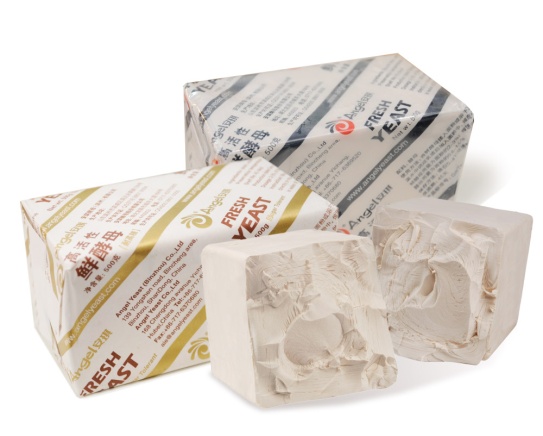
4). Cream yeast
Cream yeast is used for large scale industrial bakery and it is transported with cream yeast tanker;
It is high activity and it is economical;
It can be stored for 10-14 days at refrigerated temperature of 2-4 ℃.
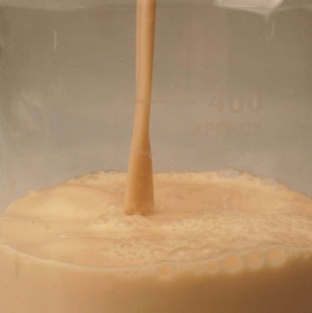
2. Which kind of yeast is more suitable for making frozen dough?
Fresh yeast and semi-dry yeast are both suitable for making frozen dough, but fresh yeast's activity declines relatively quick within the shelf life. So, the fresh yeast within 10 days of production is generally recommended to be used to make frozen dough; due to the slow decline of activity, semi-dry yeast is recommended to be used in some places where the transportation is inconvenient.
3. How to choose high-sugar yeast and low-sugar yeast?
High-sugar yeast is suitable for dough with sugar, and it still has a good fermentation performance even at 30% of sugar concentration; low-sugar yeast is suitable for making sugar-free or low-sugar fermented food like steamed bread and European staple bread because it has a good fermentation performance in sugar-free dough. The high-sugar yeast and low-sugar yeast can sufficiently produce gas in different environment and make the dough ferment and expand, and hence make better products.
4. What is the difference between commercial yeast and natural yeast?
'''Natural yeast" is commonly referred to the yeast naturally cultured by the yeast or bacteria on the grains, vegetables and fruits.
The cultured yeast on the market (dry yeast, fresh yeast and semi-dry yeast), a pure yeast with high-speed fermentation and without any infectious microbe, also belongs to natural yeast in a broad sense which is selected from nature to make bread and is produced by culturing.
5. The role of yeast in fermented food
Under suitable conditions, yeast will produce large amounts of carbon dioxide gas to make the dough become fluffy and cellular with elasticity. Compared with the other two methods of fermentation, yeast fermentation has many advantages:
It increases the nutrition.
It increases the flavor of fermented food;
It improves the production efficiency and reduces the cost.
6. How to use yeast in a proper way?
Yeast is an active fungus, and it can turn sugar into carbon dioxide, ethanol and water under certain conditions. So please observe the following precautions while using it:
Avoid putting yeast into the ice water from dissolution;
When adding the preservative (such as calcium propionate, sodium dehydroacetate, etc.), you need to increase the dosage of yeast in order to maintain the same fermentation time, and the specific dosage should be ensured according to the amount of preservative;
Increase the dosage of yeast in case of the sudden cold;
Dry yeast should be kept sealed and refrigerated in case its activity declines.
7. How to store fresh yeast in a proper way?
Due to the high water content of fresh yeast, it needs to be kept at 0-4 ℃. as required or it will quickly lose its activity and get mildew.
8. How to substitute instant dry yeast, semi-dry yeast and fresh yeast with each other?
When a kind of yeast is out of stock, we can substitute it with other kinds of yeast. The substitution rates of instant dry yeast: semi-dry yeast: fresh yeast is 1:1-1:2-2.5.
9. Differences between yeast and baking powder
Yeast produces carbon dioxide, ethanol and water in the process of glucose metabolism, which needs time; Baking powder, through chemical reaction of baking soda and acid salt, produces carbon dioxide, most of which is produced in the baking process.
10. The temperature of yeast's gas production in the shortest time
The activity of yeast increases in accordance with the rise of the temperature, so is the volume of gas. When the temperature of the dough reaches 38℃, the volume of gas produced by the yeast peaks. Thus, it's better to control the room temperature of the dough proofing between 36-40 ℃. If the temperature is too high, yeast will die and the infectious microbe will grow.
About Yeast & Baking
Angel Yeast has absorbed the essence of the global baking industry to build a baking service platform and to provide more comprehensive solutions for the baking industry.
About Angel:
Angel Yeast Company is a high-tech listed company specializing in yeast and biotech. Product business covers Yeast and Baking, Yeast Extract-Savoury, Nutrition & Health and Biotechnology fields. It is one of the world's leading companies in the yeast industry. Angel has 12 holding subsidiaries and provides products and services for more than 150 countries and regions.
Press contact:
Angel Yeast Co., Ltd.
Address: 168 Chengdong Avenue, Yichang, Hubei, P. R. China
Tel: +86-717-6369520
Fax: +86-717-6370680
Email: aie@angelyeast.com
